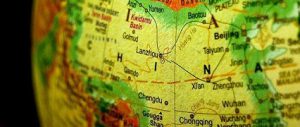The United Nations Conference on Sustainable Development that convenes this week has big shoes – and some holes – to fill. Its predecessors: the 1992 “Earth Summit” in Rio and the 1972 “Summit on the Human Environment” in Stockholm, Sweden, were crucial milestones in the global discourse on environment and economic development. It remains to be seen what Rio+20 will become.
The Stockholm summit was a landmark event which put the environment on the global agenda. It was a global acknowledgment of modern man’s hand in environmental deterioration. The declaration produced at the end of the conference commenced by acknowledging a truism of modernity: “Man has acquired the power to transform his environment in countless ways and on an unprecedented scale.”
Through its deliberations, the conference suggested that in modernity’s new-found powers was “a new liberation movement to free men from the threat of their thralldom to environmental perils of their own making.” It acknowledged that modernity had created problems of an “unprecedented scale” and that it also had the power to save itself through its science and technology. This was the first articulation of what remains the essential idea of a “green economy.”
With post-colonial perceptions of victimisation, both real and perceived still widespread, Stockholm strongly endorsed the right of “developing countries” to overcome “under-development,” through the same modernisation and industrialisation that it acknowledged as driving the environmental problems in industrialised countries. Simultaneously, under-development was also blamed for “most of the environmental problems” in these countries.
Caught in a “Catch-22” situation, the crucial escape hatch would be that under-developed countries could industrialise in more efficient and less destructive ways than the industrialised countries did during their industrial transformations – and this outcome would be contingent on the transfer of technology, know-how and availability from the developed world.
The Stockholm summit framed its proposals with states as the prime actors. States were entrusted to pass national laws, to build national institutions and embark on rational planning to “safeguard the natural resources of the earth for present and future generations.”
However, at the “Earth Summit” in Rio, the Stockholm declaration was taken forward in significant ways. The Rio declaration endorsed a new range of ideas, including: the precautionary principle; the “polluter pays” principle; common but differentiated responsibilities; the principle of subsidiarity; appropriate access to information for citizens; and the environmental impact assessment. Rio also left us with landmark conventions on biodiversity, climate change and a “plan of action” in the form of a remarkable document known as “Agenda 21.”
The Earth Summit transcended the state-centered emphasis of Stockholm: it globalised the environment and its concerns – and gathered and legitimised in a multilateral process the vocabulary and a good part of the syntax of the environmental language that has been spoken ever since. These were commendable accomplishments.
Building on Stockholm, Rio also enshrined the “right to development”. However, the meaning of development – or indeed the phrase “quality of life” – remains undefined. Without an accepted and substantive understanding of what development is and what its goals ought to be, Rio had little to offer on this matter beyond the casual association of human development and economic growth.
It thus remained mired in the problems that ensue from an open-ended commitment to economic growth on a finite planet. Having made this commitment, it reiterated, albeit with more nuance than Stockholm, the need to integrate and manage the environmental externalities of economic growth through advances in scientific and technological knowledge and effective legislation. This was the essence of the green economy as it turned 20.
Standing at the doorstep of Rio+20 two decades later, and despite many achievements to date, the crisis of biodiversity loss, climate change and inequality remain with us, more than ever. And we have again a revival of interest in “green economy in the context of sustainable development and poverty eradication.” At Stockholm and Rio the idea of applying scientific and technological advances to alleviate mankind’s impact on the environment, while advancing economic growth, marked advances in the environment-development discourse.
But the same emphasis at Rio+20 reflects a discussion stuck with ideas that have already pulled their weight. They have taken us forward a great distance, but it is evident that the path ahead needs deeper introspection and imagination. As it stands now, Rio+20 does not demonstrate the boldness of its predecessors and fails to advance the discourse based on the urgent lessons of the past four decades.
An essential fact – and an urgent lesson today – is that economic growth is not the most important tool to advance well-being; and the prospects of more economic growth are seriously constrained by “planetary boundaries” that have already been surpassed even as grave inequalities of wealth, of opportunity and of the burdens of environmental degradation have been accentuated. In essence, economic growth has failed to dematerialise, even as wealth and dignity have failed to trickle down in significant ways. This is the urgent lesson that needs to be heeded. This impasse cannot be bridged by endlessly asserting the efficiency of modernity’s technological capabilities.
If the green economy is to have meaning in the twenty-first century, it must mean egalitarian and democratic social and political arrangements of modernity’s vaunted scientific and technological capabilities. Science and technology are the means to arrange our world. For instance, nuclear power, by its very nature is predisposed to centralised and secretive institutions to manage and oversee the production and distribution of power. It cannot be socially reflexive and politically inclusive and its electricity has to be transmitted via a large national or regional grid. If you wanted to align electricity production with informed and context-based social and economic goals, you’re out of luck. Or indeed if you are poor and not connected to the grid.
If the green economy is to help society towards a more equitable and sustainable world, as it must, the technologies it employs have to enhance human freedoms within the bounds of the ecosystem’s energy and material limits. They have to be democratic technologies that distribute the ability to produce wealth, even as they remain responsive to social and ecological feedbacks of that wealth production. It’s a tall order, but a worthwhile test for modernity and our pride in its capabilities.
Manu V Mathai is a research fellow at the United Nations University’s Institute of Advanced Studies.
This article is published here as part of Nuclear Enery and Developement Programme, which is supported by the Heinrich-Boell Foundation.
Homepage image by Birdyphage




